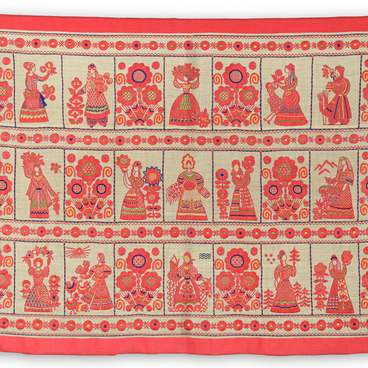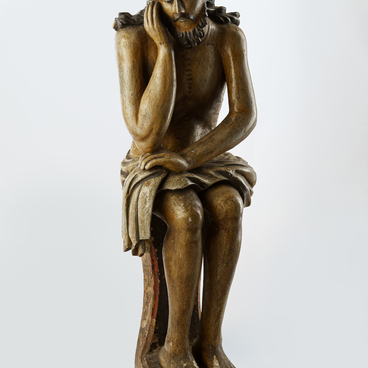The tradition of creating wooden carved images of saints came to Rus from Byzantium. At the beginning of the 18th century, the Russian Orthodox Church forbade making three-dimensional images of saints. The decree of the Holy Synod from May 21, 1722 prohibited “to have carved, or chiseled, hollowed out, or sculpted icons in churches.”
Such sculptures were considered a continuation of pagan traditions. Many wooden sculptures were burned. Nevertheless, unique artifacts depicting the most revered saints have been preserved to this day, for instance, sculptures of Paraskeva Friday, George the Victorious, St. Nicholas, John the Baptist and others.
John the Baptist, the predecessor of Jesus Christ, who baptized Him in the waters of the Jordan River, is one of the most beloved and revered saints in Christianity. In the Russian Empire, wooden polychrome images of John the Baptist’s head appeared in the last quarter of the 18th century. They were mostly sculpted in high relief. Wooden sculpture was especially popular in the regions of the Russian North. The names of the makers of such works are largely unknown.
According to the Gospel, the saint lived in the desert and preached. Upon learning that the tetrarch of Galilee, Herod, had taken his brother’s wife (and his relative) Herodias and married her, grossly violating Jewish custom, John rebuked the ruler. For that, he was imprisoned, but Herod Antipas did not dare to execute John. The angry Herodias desired the death of the accuser. She persuaded her daughter Salome to dance in front of Herod and ask for the head of John the Baptist as a reward.
The sculptural image of John the Baptist’s head,
presented at the exhibition “The Art of Mstyora” is dated to the 18th century. The place of creation has not been determined. The prophet’s head lies
on a large platter with a low ornate rim around the edge. Long curly hair and
beard fall onto the dish, almost covering its entire surface. John’s face is
devoid of a grimace, calm and handsome. In the Western European tradition,
there are images in which certain signs of his martyrdom are marked on the face
and neck of the saint. In the Orthodox interpretation of the plot “Beheading of
John the Baptist”, the expression of the saint’s face is usually calm.








